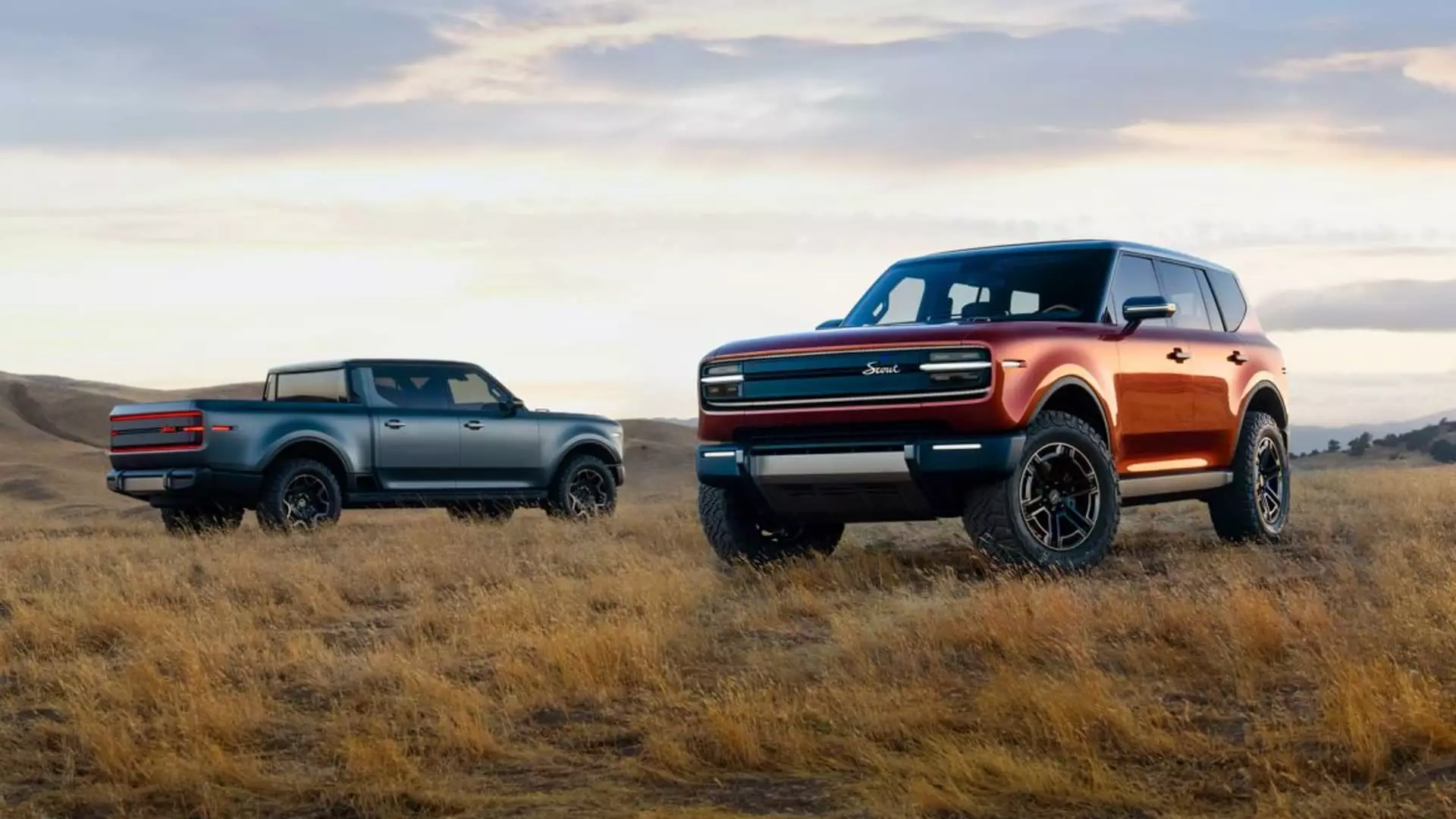The resurgence of iconic automotive brands often evokes nostalgia and hope for innovative engineering, and with the reintroduction of Scout Motors, both are being realized. Originally established in 1961 and operating until 1980, Scout has stepped back into the automotive scene under the umbrella of Volkswagen Group. With more than 50,000 refundable reservations for its electric pickup trucks and SUVs already secured, the company is gearing up for a significant market entry, raising both excitement and critical scrutiny in equal measure.
Oliver Blume, Volkswagen’s CEO, has emphasized that the overwhelmingly positive response from customers signals nostalgic ties to the Scout heritage. During a recent event at the CES tech conference in Las Vegas, Blume framed the brand’s revival as a “love story,” suggesting that consumers are not merely interested in the vehicles but are also emotionally invested in the brand’s legacy. However, while the initial reservation numbers reflect considerable interest, it’s crucial to note that they do not guarantee sales. This discrepancy points to the challenges that await Scout as it moves closer to market introduction.
Scheduled for delivery in 2027, the Scout lineup includes the Terra pickup and the Traveler SUV, available as all-electric vehicles and extended-range electric vehicles (EREVs). While some industry observers may view the reservations as modest—particularly compared to the fervor surrounding earlier electric vehicle launches—Scout’s strategy appears geared towards navigating the current electric vehicle landscape’s complexities. Volkswagen currently holds a mere 4% of the U.S. market share, and Blume’s ambitions hint at a broader goal to enhance this figure, although specific targets remain unarticulated.
Scout CEO Scott Keogh echoed these sentiments, revealing that 70% of reservations for the Traveler SUV indicate a strong consumer preference that aligns with internal forecasts. Yet, the company has opted to keep specifics about EREV versus all-electric model reservations under wraps, which raises questions about transparency and strategic marketing.
The inclusion of EREVs in Scout’s offerings showcases a strategic approach to mitigating risks associated with fluctuating consumer demand for electric vehicles. EREVs combine electric motors, battery cells, and traditional internal combustion engines, enabling flexibility in energy use that may appeal to a broader range of consumers. This design positions Scout favorably within an industry that continues to grapple with the challenges of fully transitioning to electric solutions. As Keogh mentioned, the positive reactions to EREVs prove they can safeguard the brand against potential sales volatility.
Technological Innovations and Production Goals
Scout is also focused on technological innovation as it works to complete a $2 billion manufacturing facility in South Carolina. The ambitious site aims for an annual production capacity of 200,000 vehicles, catering to the anticipated demand. In addition, the integration of sophisticated software and electrical architecture from a joint venture between Volkswagen and Rivian hints at a forward-thinking approach to connectivity and user experience within its vehicle lineup.
Detailing the vehicle specs, both the Traveler and Terra are expected to retail below $60,000, with the EREV variants boasting ranges exceeding 500 miles. For the all-electric models, an impressive range of up to 350 miles positions Scout competitively against established players in the electric vehicle sector.
Although Scout Motors has successfully harnessed initial consumer enthusiasm, the road ahead is fraught with challenges. The revival of a nostalgic brand must balance the expectations of consumers who seek both heritage and innovation while successfully navigating the competitive electric vehicle landscape. The company’s ability to convert reservations into tangible sales will be the ultimate test of its market strategy as it attempts to carve out a significant share in a rapidly evolving industry. As Scout prepares for its market debut, stakeholders will undoubtedly be keenly watching for both the company’s advancements and the realization of its ambitious vision.

